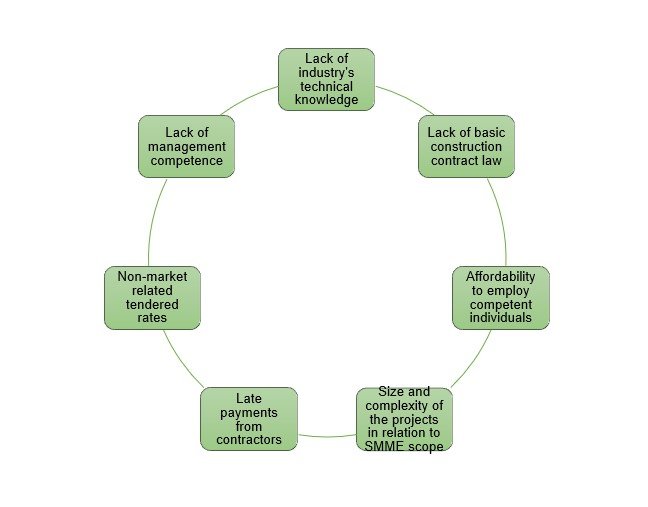Publications

Siseko Bonelwa
4th Nov, 2020
INTRODUCTION
The Small Micro Medium Enterprise (SMME) firms include classifications such as micro-enterprises, survivalist-enterprises, informal sector enterprises, and formal small and medium-sized enterprises Gasa (2012). These contractors in the construction sector normally specialise in civil works, electrical work, concrete work, steelworks, glazing, etc. They may employ between 100 and 200 people.
The National treasury’s implementation guide (formally known as Preferential procurement regulations, 2019 pertaining to the preferential procurement policy framework ACT, ACT No 5 of 2000) requires public institutions to identify procurement opportunities for designated groups (SMME contractors) and apply the 30% compulsory sub-contracting provision where feasible for projects above R30 million.
CHALLENGES FACED BY THE SMME CONTRACTORS
It is evident that SMME contractors are one of the major contributors of delays in the execution of government projects in South Africa.
The figure below highlights some of the factors that are affecting the SMME contractor’s performance and quality of work.

RECOMMENDATIONS
Below are some of the preventative measures that may be implemented:
CONCLUSION
With the factors highlighted above, it is vital that SMME development strategies be put in place to ensure that the SMME contractors fully understand the construction law, processes, and techniques. But to be successful, these investments need to be accurately targeted.
EARLIER POSTS